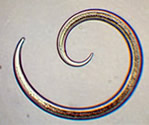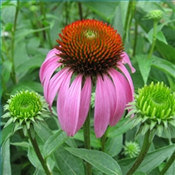Diagnostics, Identification, & Additional Services
Radon Testing
High radon levels in Georgia counties
Radon occurs naturally when uranium breaks down to form radon. Uranium is often found in high concentrations in granite rocky soils, as are common in northern Georgia counties. As radon is released into the soil, it can enter buildings through the foundation and well water, eventually building to dangerous levels.
Radon kills nearly 21,000 people each year, more than 800 of them in Georgia, and is the second leading cause of lung cancer in the United States after tobacco smoke. Smokers are at an even higher risk of radon-induced lung cancer than nonsmokers.
Test for radon in your home
Make sure your home is safe by ordering a test kit online or by mail for only $15! This price includes shipping, lab processing, and follow up service for testers with elevated results. (Non-Georgians should visit the EPA for assistance assessing radon risk.)
Radon Education Information pdfCLICK HERE to view the Radon Testing home page.
Plant Tissue Analysis
Several tests can be performed through leaf tissue analysis. Costs for the tests are dependent upon which test is selected.
Results in most cases will be returned in approximately two weeks along with applicable recommendations for any problems discovered.
Nematode Testing
Nematodes cause roots to become knotted and galled and impair the root system so that water and nutrients cannot be taken up. Nematode damaged plants become stunted, turn yellow and wilt in hot weather.
The best time to determine if you have a nematode problem is in the summer and fall, when nematodes are most numerous.
Plant Identification and Plant Disease Identification
Plant identification is critical for Integrated Pest Management (IPM) and the proper use of pesticides in agriculture and horticulture situations. It is also helpful to the clientele that just want information on that weed, flower, shrub or tree growing in their landscape.
Disease organisms such as fungi, bacteria, and viruses can damage and/ or kill a wide variety of plant materials in Georgia. It is essential to identify the organism accurately before implementing control strategies.
Tips for Submitting Plant Specimens
When possible, collect a generous sample of the plant's stem with leaves still attached. Try to include any flowers, fruits, cones or buds of the plant.
Deliver the specimen fresh to the county Extension Office. Plant samples may not be identifiable if they have been crushed, decayed or dried and shriveled. Samples identified in our office are free of charge.
You will need the following information at minimum:
- Description of site where plant was collected. (Sun/shade, natural area/landscape, wet/dry area etc.)
- Your name and address.
- Date it was collected.
- Description of plant (size, shape, description of flowers, etc.).
- Stage of growth: seedling, blooming, fruiting.
Insect Identification
Proper diagnosis is necessary to achieve good pest management. It's important to remember that only a small percentage of insects on plants are pests. For instructions on collecting samples for identification, please call our office.
Tips for Submitting Insect Specimen
- Collect samples safely or take a clear photo to submit to our office via email (uge2113@uga.edu).
- Collect insects with all body parts intact where possible.
- Deliver the specimen fresh to the county Extension Office.
Insect samples may not be identifiable if they have been crushed, decayed or dried and shriveled.
Samples identified in our office are free of charge.
You will need to provide the following minimum information:
- Description of site where collected (inside home, outside, etc.)
- Your name and address.
- Date specimen was collected.
- Description of damage done.
- Amount of insects seen in the area.
